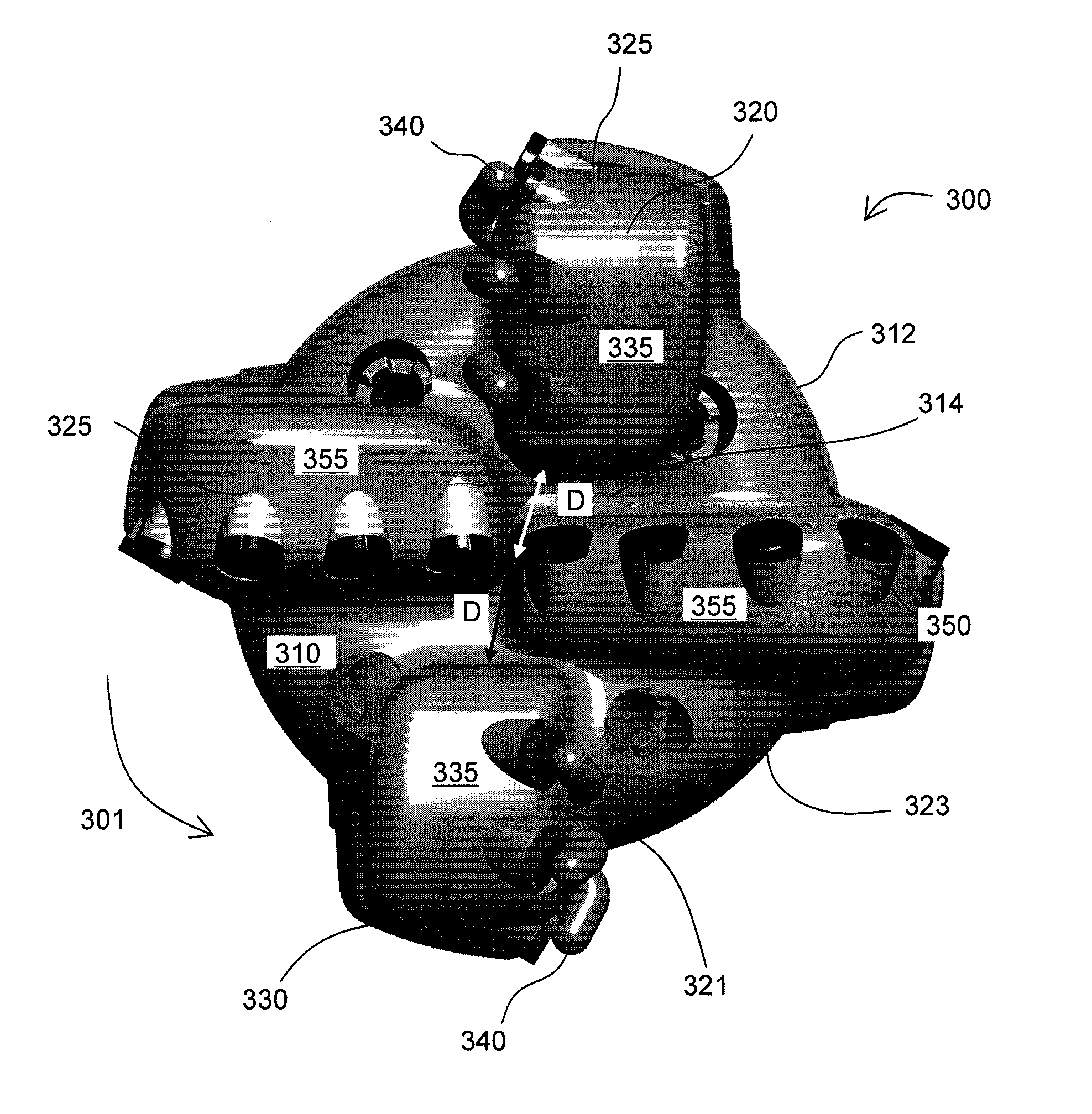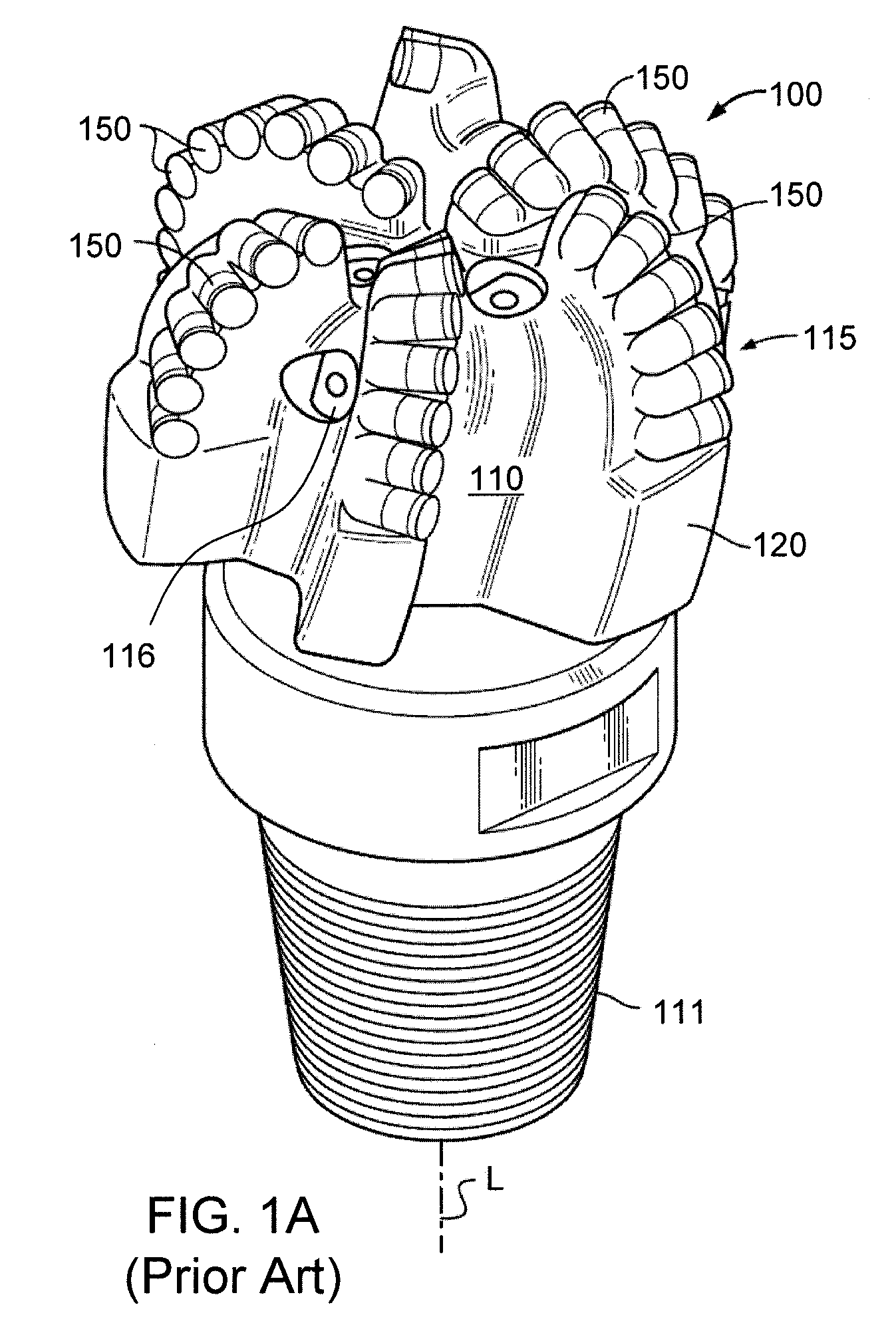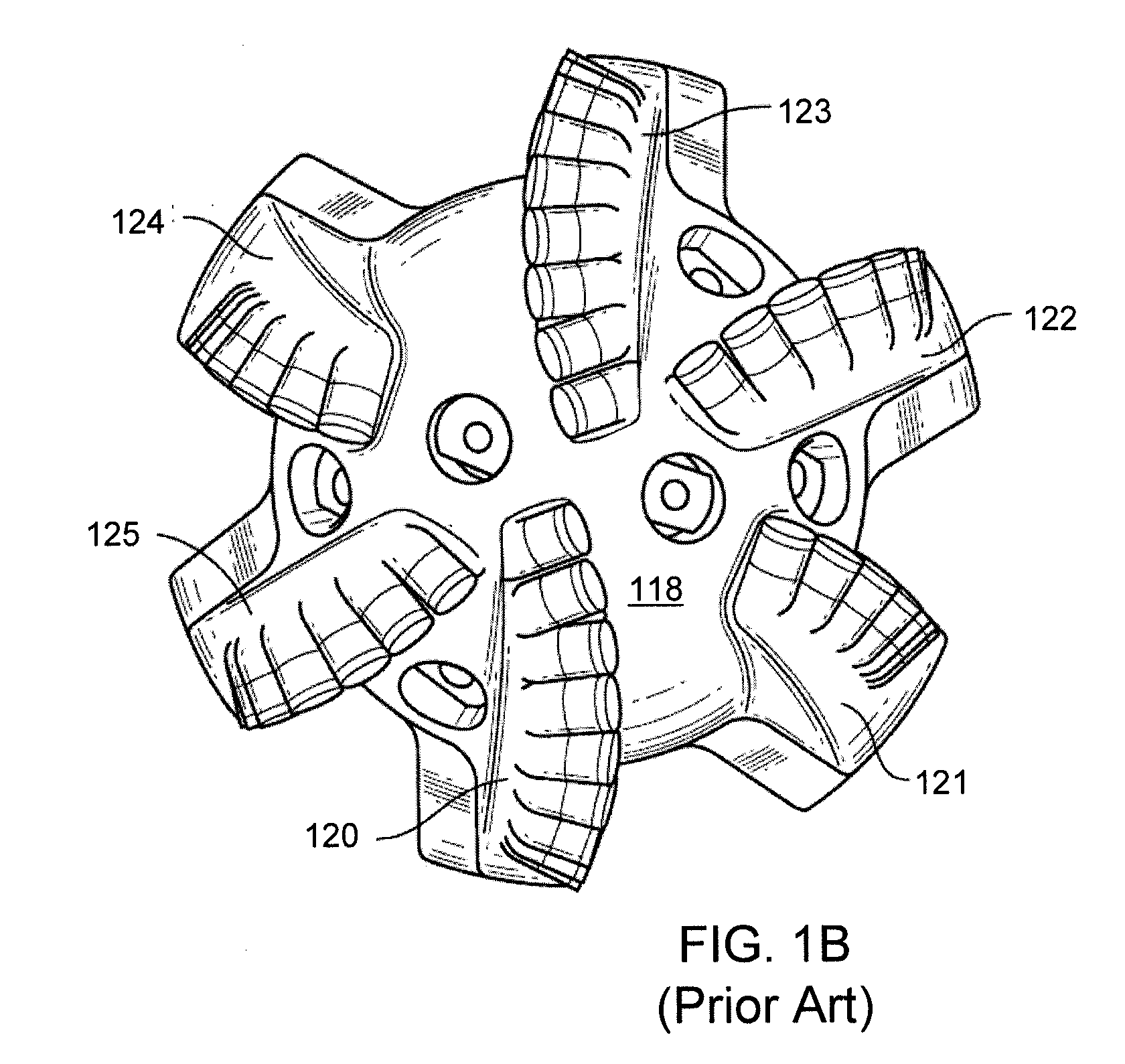Rolling cutter assembled directly to the bit pockets
a technology of rolling cutters and bit pockets, which is applied in the direction of earth-moving drilling tools, construction, metal-working drilling tools, etc., can solve the problems of cutter failure, drill bit failure, and bit and pdc cutters being subjected to substantial abrasion forces during drilling operations,
- Summary
- Abstract
- Description
- Claims
- Application Information
AI Technical Summary
Benefits of technology
Problems solved by technology
Method used
Image
Examples
Embodiment Construction
[0046]Drill bits according to embodiments of the present disclosure and methods for forming such drill bits are described below. According to some embodiments of the present disclosure, a drill bit has at least one rolling cutter and a blocker positioned adjacent to each rolling cutter. Rolling cutters of the present disclosure may be used on downhole cutting tools including, for example, drag bits and hybrid drill bits.
[0047]A rolling cutter, as referred to herein, is a cutting element having at least one surface that may rotate within a cutter pocket as the cutting element contacts the drilling formation. As the cutting element contacts the formation, shearing may allow a portion of the cutting element to rotate around a cutting element axis extending through a central plane of the cutting element. Rolling cutters according to the present disclosure are retained within the cutter pocket by a blocker. As used herein, a blocker is a component separate from the bit that is attached t...
PUM
| Property | Measurement | Unit |
|---|---|---|
| side rake angle | aaaaa | aaaaa |
| side rake angle | aaaaa | aaaaa |
| side rake angle | aaaaa | aaaaa |
Abstract
Description
Claims
Application Information
 Login to View More
Login to View More - R&D
- Intellectual Property
- Life Sciences
- Materials
- Tech Scout
- Unparalleled Data Quality
- Higher Quality Content
- 60% Fewer Hallucinations
Browse by: Latest US Patents, China's latest patents, Technical Efficacy Thesaurus, Application Domain, Technology Topic, Popular Technical Reports.
© 2025 PatSnap. All rights reserved.Legal|Privacy policy|Modern Slavery Act Transparency Statement|Sitemap|About US| Contact US: help@patsnap.com



